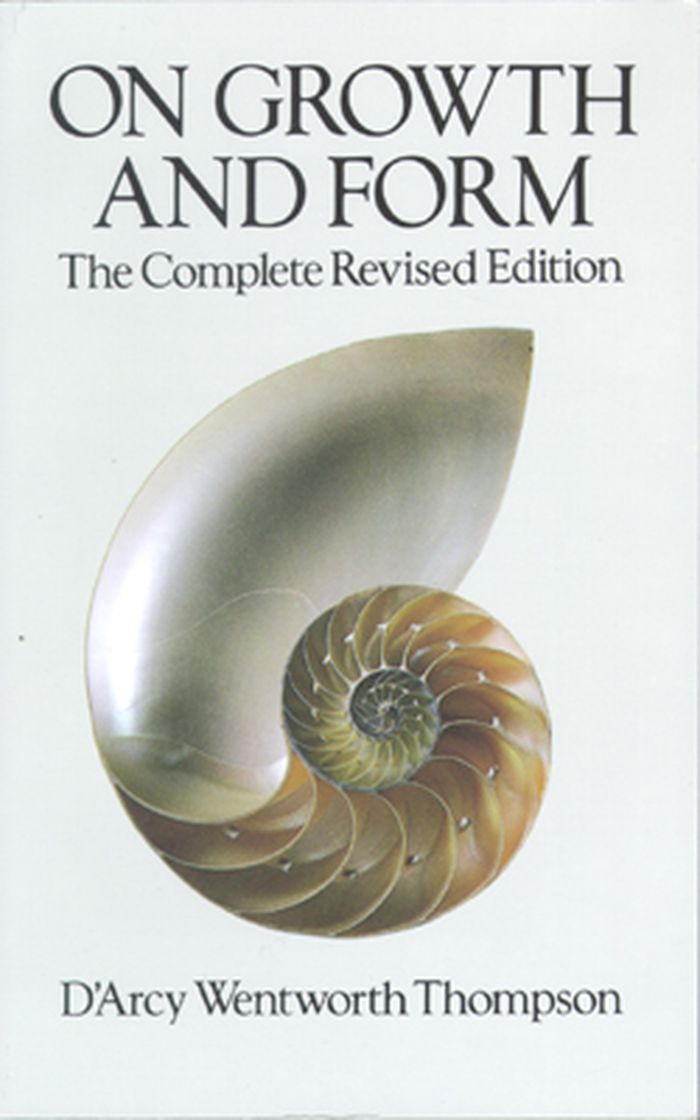$45.95
(available to order)
Summary:
First published in 1917, On Growth and Form was at once revolutionary and conservative. Scottish embryologist D'Arcy Wentworth Thompson (1860-1948) grew up in the newly cast shadow of Darwinism, and he took issue with some of the orthodoxies of the day--not because they were necessarily wrong, he said, but because they violated the spirit of Occam's razor, in which simple(...)
Natural Forms in Architecture
January 1900, New York
On growth and form: the complete revised edition
Actions:
Price:
$45.95
(available to order)
Summary:
First published in 1917, On Growth and Form was at once revolutionary and conservative. Scottish embryologist D'Arcy Wentworth Thompson (1860-1948) grew up in the newly cast shadow of Darwinism, and he took issue with some of the orthodoxies of the day--not because they were necessarily wrong, he said, but because they violated the spirit of Occam's razor, in which simple explanations are preferable to complex ones. In the case of such subjects as the growth of eggs, skeletons, and crystals, Thompson cited mathematical authority: these were matters of "economy and transformation," and they could be explained by laws governing surface tension and the like. (He doubtless would have enjoyed the study of fractals, which came after his time.) In On Growth and Form, he examines such matters as the curve of frequency or bell curve (which explains variations in height among 10-year-old schoolboys, the florets of a daisy, the distribution of darts on a cork board, the thickness of stripes along a zebra's flanks, the shape of mountain ranges and sand dunes) and spirals (which turn up everywhere in nature you look: in the curve of a seashell, the swirl of water boiling in a saucepan, the sweep of faraway nebulae, the twist of a strand of DNA, the turns of the labyrinth in which the legendary Minotaur lived out its days). The result is an astonishingly varied book that repays skimming and close reading alike.
Natural Forms in Architecture
On growth and form
$21.95
(available in store)
Summary:
Why do living things and physical phenomena take the form they do? D'Arcy Thompson's classic "On Growth and Form" looks at the way things grow and the shapes they take. Analysing biological processes in their mathematical and physical aspects, this historic work, first published in 1917, has also become renowned for the sheer poetry of its descriptions. A great scientist(...)
On growth and form
Actions:
Price:
$21.95
(available in store)
Summary:
Why do living things and physical phenomena take the form they do? D'Arcy Thompson's classic "On Growth and Form" looks at the way things grow and the shapes they take. Analysing biological processes in their mathematical and physical aspects, this historic work, first published in 1917, has also become renowned for the sheer poetry of its descriptions. A great scientist sensitive to the fascinations and beauty of the natural world tells of jumping fleas and slipper limpets; of buds and seeds; of bees' cells and rain drops; of the potter's thumb and the spider's web; of a film of soap and a bubble of oil; of a splash of a pebble in a pond.

